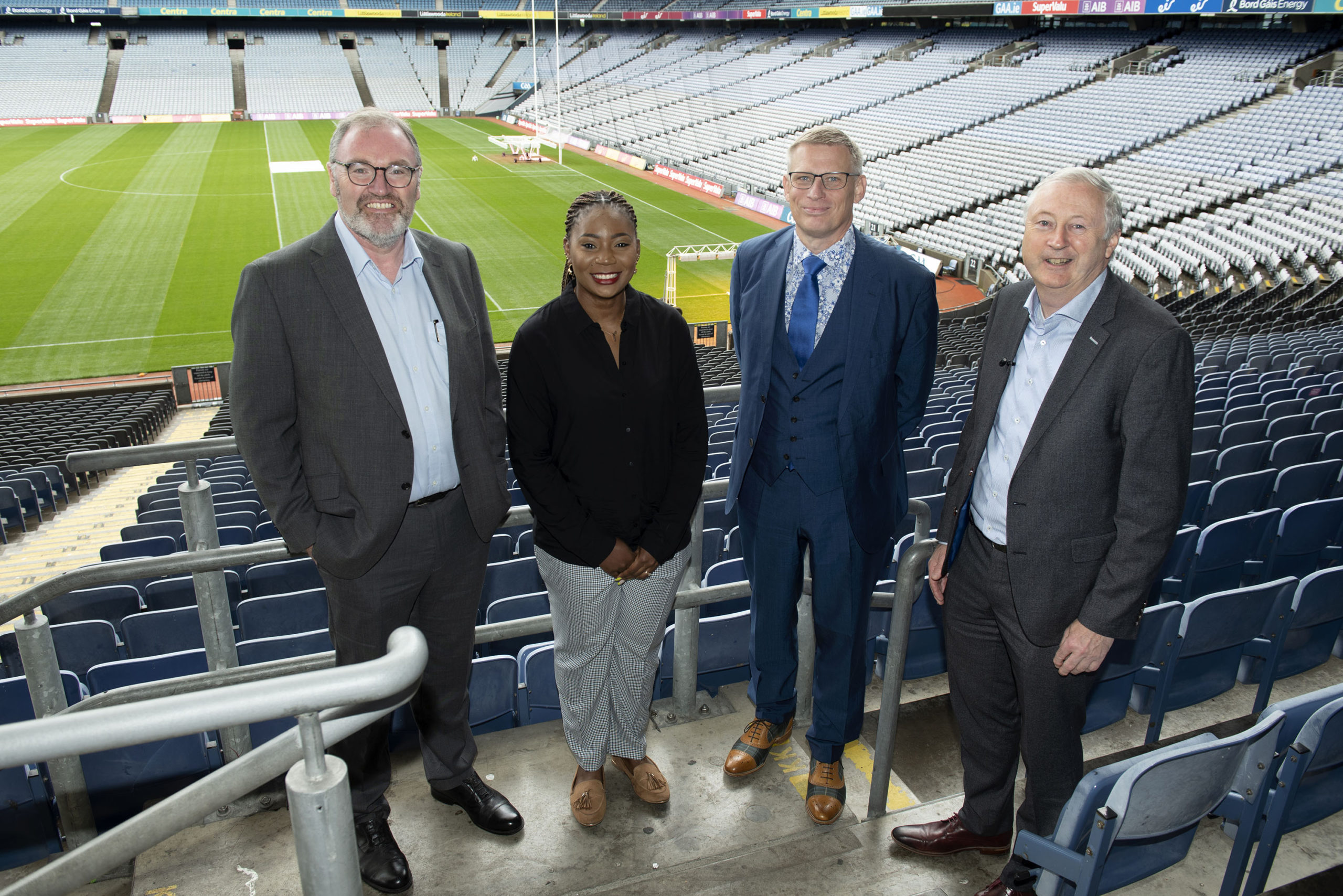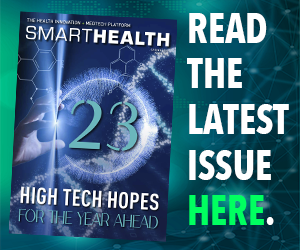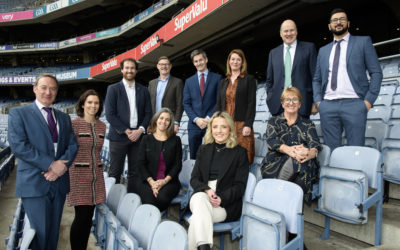Pictured above is Neil O’Hare, Professor of Health Informatics, UCD and group chief information officer, Children’s Health Ireland; Blessing Usoro, founder, Cyber For SchoolGirls; Niels Torm, CIPP/E, associate director, Data Sustainability & Privacy Solutioning Lead – Global Growth Markets, Cognizant and Martin Curley, director, Digital Transformation and Open Innovation, Health Service Executive. Photos: Maura Hickey
After a major boost thanks to the pandemic, there’s a danger that leadership can revert back to the fear and apprehension that plagued previous IT projects, and CIOs must be heard, writes Quinton O’Reilly
A wet and blustery morning was the backdrop for this year’s CIO and IT Leaders Summit, and if anything, it was a good reflection of what businesses that are transforming to become digital are currently facing.
For what was a sunny and transformative two and a half years, both in changes in systems and cultures, much of that progress could be at risk as costs rise and leaders begin to fear taking action. A full house of leaders and key stakeholders were in attendance at the summit, which took place at the Hogan Stand in Croke Park earlier this year.
Jonathan Healy, broadcaster and summit chair, summed up the challenges the room faced. “Change is happening whether your organisations are fully keyed into it or not,” he said. “And now the CIO and IT leaders among you are the ones driving that change, sometimes having to bounce and cajole people with you.”
Resisting old behaviours
If there was a need to set a standard for which the entire summit followed, it couldn’t have had a better opening keynote address than Richard Corbridge, the VP and CIO of Walgreen Boots. The address, titled ‘Building back better’, set the tone for the rest of the day with many of the speakers referring back to themes it brought up.
Speaking over Zoom due to Covid precautions, Corbridge spoke about how significant progress was made in the last two and a half years, but there was a real danger that the conversation around IT will revert back to the bad old days.
“The fear factor is starting to slip back in,” he said. “Some of the old behaviours are really starting to come back, that governance level of let’s check everything [before doing anything].
“We find ourselves having conversations we thought we wouldn’t hear any more around whether we should invest or take the risk and accept downtime in key systems.”
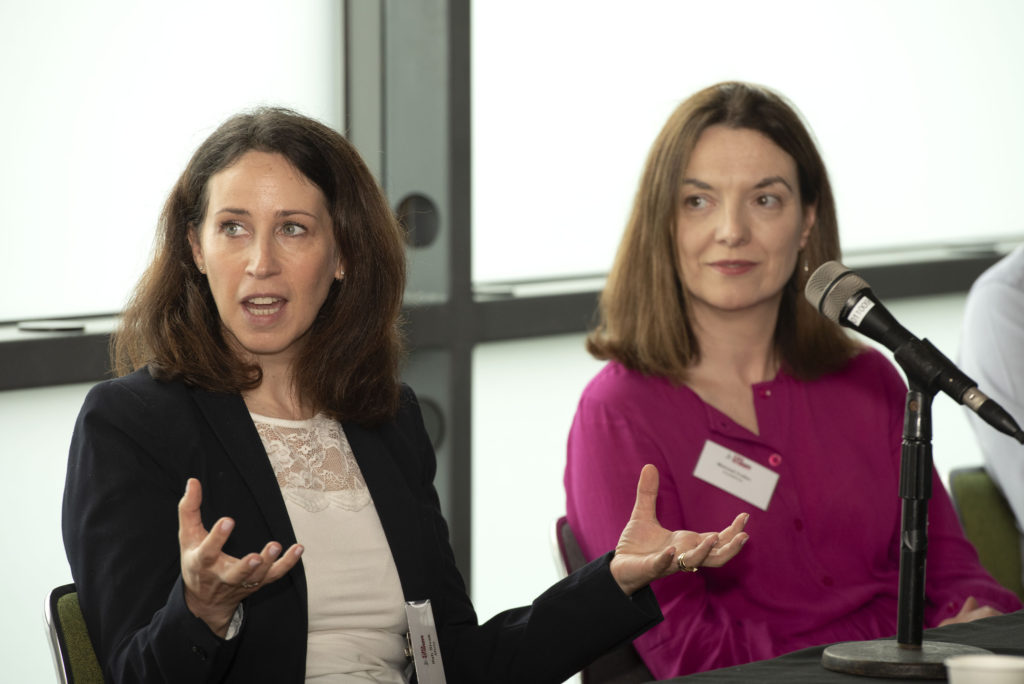
Ifah Sivak, head of systems project management, Meta, and Mairead Cullen, IT director, Vodafone Ireland
This was followed by Puneet Kukreja, cybersecurity practice leader for EY Ireland, who elaborated on many of Corbridge’s talking points during his presentation.
A crucial part of his talk focused on how even the language may not match understanding as the same term can be interpreted differently. “What are your transformation objectives? What are you trying to be?” he asked. “Are you trying to be a digital-first organisation or a customer-first organisation?
“These words are key because they’re thrown about without truly understanding what it takes to be a customer-first organisation that is digital-enabled with a cloud-first strategy. Someone doing bingo can tick all these boxes because they all mean different things.”
Corbridge’s talk lent itself to the first panel discussion: ‘Technology leadership in a digital-first world’. On the stage were Tim Hynes, chief innovation officer for AIB, Andrew Warren, head of banking and financial services UK and Ireland at Cognizant, Seamus Dunne, managing director at Digital Realty Ireland, and Lavinia Morris, chief operations officer at KBC Bank Ireland.
The confusion can mean organisations are unwilling to make leaps because of the potential risks involved.
“If your business isn’t moving faster and digitalising everything, you’re going to be left behind,” Dunne said. The problem can mean organisations are unwilling to make leaps because of the potential risks involved.
The talent gap was something addressed, with Hynes mentioning that those within the organisation are a resource that can be retrained and upskilled. Indeed, talent and staff retention is the No 1 challenge for CIOs and technology leaders, as evidenced by the response to a polling question among event delegates with 55 per cent reporting it as their main challenge.
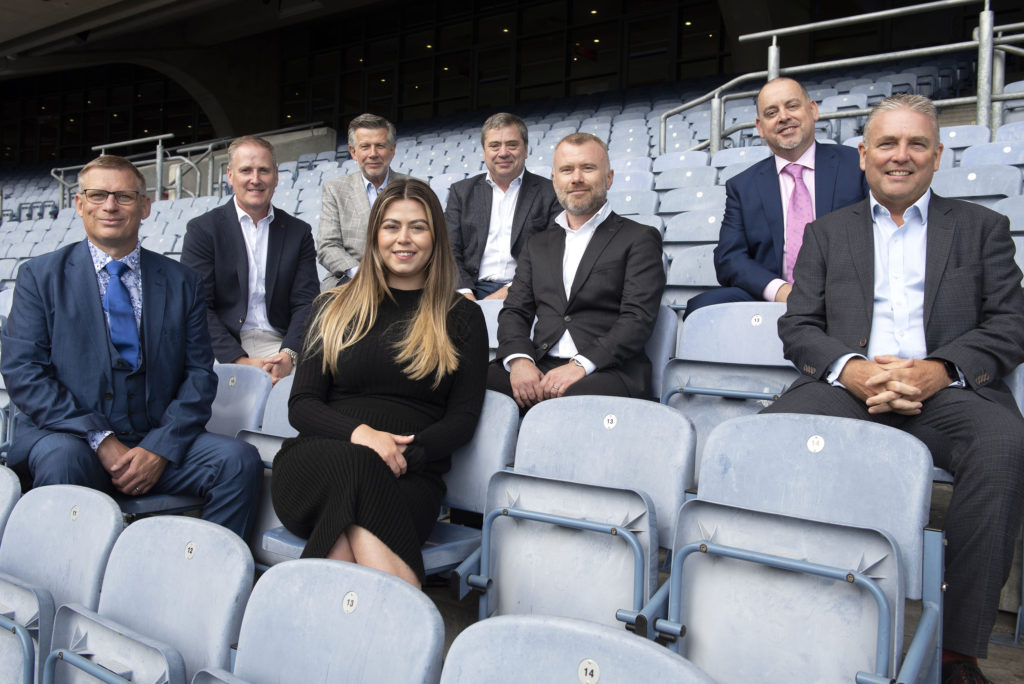
From left: Niels Torm, CIPP/E, associate director, Data Sustainability & Privacy Solutioning Lead – Global Growth Markets, Cognizant; Steve MacNicholas, chief executive, Ekco Cloud Ireland; Andrew Warren, head of banking and financial services UK & Ireland, Cognizant; James Maudslay, digital industry lead for enterprise transformation, Equinix EMEA; Ashley Hennessy, marketing executive/SEO expert, Kianda Technologies; Rob Haniver, associate partner, technology and commercial, EY Law Ireland; Darren Clarke, head of customer success, OpenSky Data Systems and Greg Casey, sales director at Digital Realty
Putting the user front and centre
After the initial morning break, the summit broke into two main streams, with stream one focusing on designing digital governance services for maximum impact. The first talk was on the Government’s digital and ICT strategy, presented by Ossian Smyth TD, Minister of State for the Department of Public Expenditure and Reform.
During a wide-ranging talk, Smyth highlighted a major problem for CIOs in general; the dual role they have in maintaining existing systems while implementing transformation projects, each one effectively a role in itself.
Moving on was a panel discussion on delivering digital transformation in government which featured Lisa Baron-Broadhurst, programme director for the Social Security Programme in Scottish Government, Ruth Buckley, CIO of Cork City Council, Gavin Ross, head of information services division at the Department of Transport, and Tim Willoughby, head of digital services and innovation at An Garda Síochána.
Baron-Broadhurst highlighted the importance of engaging with users early on, because if you don’t understand them, you can’t develop a product that will be adopted and used by them.
That was followed by a case study on change management and how the Government helped those coming from Ukraine by developing a solution within four weeks proving a dynamic and agile way of working.
The panel featured Meagan Ní Chuirc, higher executive officer of ICT and Procurement Unit for the Department of Children, Equality, Disability, Integration and Youth, Caitriona McGuckian, assistant principal ICT Department of Children, Equality Integration and Youth, and Darren Clarke, head of customer success at OpenSky Data System.
“We are a young ICT unit and the Ukrainian crisis moved us from being a policy driven department in the space of a few days to providing 24/7 services to Ukrainian families fleeing unimaginable circumstances.
“The emergency was crying out for a digital platform that could manage the numbers,” said Ní Chuirc. The final panel of this stream included Martin Curley, director, digital transformation and open innovation for the HSE, Neil O’Hare, group CIO at Children’s Health Ireland, Blessing Usoro, information security manager and founder of Cyber for School Girls, and Niels Torm, associate director, data sustainability and privacy solutioning lead at Cognizant.
On the subject of data and public trust, Torm argued that privacy is all about trust, and higher trust means more information as users will know it’s being used correctly.
He said that in Denmark there is a very high level of trust in public services. In heathcare, for example, patients decide who has access to their data. Curley said we are moving towards healthcare 4.0 where co-production of services with patients is growing as patients start to manage their own healthcare data.
Likewise, Usoro mentioned how transparency is key and users that know how their information is used and accessed is key if you want to build up trust.
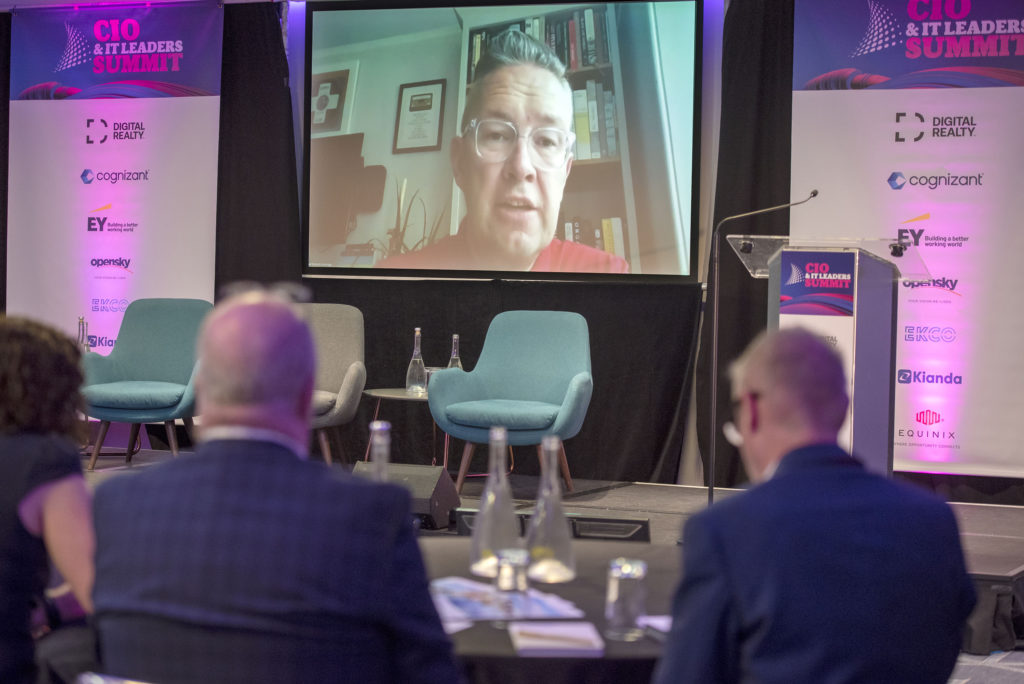
Richard Corbridge, vice-president and CIO, Walgreen Boots
A leadership, not tech, problem
The second stream was on spearheading a digital culture at every level of the business, chaired by Tony Moroney, founder and managing partner at BetaDigital. The opening case study on bridging the gap between technology and leadership was given by Niall McKeown, digital transformation strategist and creator of Ionology’s Digital Transformation Frameworks.
Citing some of the problems he sees in digital transformation plans, he warned about how the discrepancy between leaders and technologists is that the latter will deliver all of the time; the issue is what they’re being asked to deliver. “Most digital transformation projects fail to deliver and that ain’t a tech problem, that’s a leadership problem,” he said.
Following that was a fireside chat on digital transformation without compromising security or data sovereignty. It featured Steve MacNicholas, chief executive of Ekco Cloud Ireland, and Mike Harris, partner for digital risk at Grant Thornton Ireland.
MacNicholas mentioned that it’s always important to know what the business imperative is for the solution. Because of skills shortages, picking key service providers who bring unique skills, availability and agility is more important than ever.
The first panel discussion of this stream was on harnessing digital transformation and emerging tech in a post-Covid world and featured David Lines, head of enterprise applications at Origina, Dr Ben Warren, senior technology leader and digital transformation expert and Mary O’Connor, CIO of ESB.
Speaking about the transformation during the pandemic, O’Connor mentioned it was “a big change to move at speed”, but it helped show people that IT can move fast and drive change. The penultimate discussion of the stream concerned finding the sweet spot between excellent customer experience and the future goals of the business.
It included Ifah Sivak, head of systems project management for Meta, Mairead Cullen, IT director for Vodafone Ireland, Thomas Reby, head of hardware at Google Store and Google One, and Helene Graham, technology consultant.
Sivak mentioned that while all customer experience programmes bring challenges, the customer must be at the centre of it, understanding what it is you’re delivering and what they want from you.
The final fireside chat on trends in IT consumption models across cloud and infrastructure stacks had Séamus Dunne, managing director of Digital Realty Ireland, as its chair and featured, Conall Laverty, chief executive of Real World Analytic and Founder of Wia and Kevin Reid, chief technology officer of SureSkills.
Reid warned against upskilling current workers for the sake of it. Instead of treating them as coders, look at what skills can better serve business processes.
“They know the IT assists that deliver your business, so it’s getting them to work more within the operational side,” he said. “Understanding how you can maximise the value you get from IT and how that relates to your business can be a better usage of their skills.”
Once the streams concluded, attendees had a choice of five roundtables. The first was designing digital government services for maximum impact hosted by Barron-Broadhurst, the role of the CIO with Morris, and the second was securing the new normal with Fintan Swanton, senior consultant and managing director for Cygnus Consulting Ltd.
In addition was embracing digital transformation with James Maudslay, digital industry lead for enterprise transformation with Equinix EMEA, and what happens when you’re hit by ransomware with Frank Renehan, director at Komtex, an Ekco company.
By the time the robust summit had finished, the rain had subsided and the sun was out. Many of those leaving the venue will hope that it was a sign of a bright digital future to come for their organisations.

